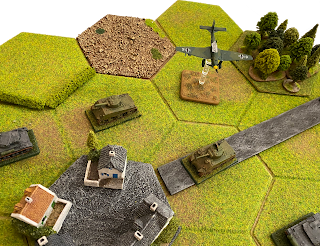The Guards of the City Watch were patrolling om market day in the City of Traitor’s Toll. Guards of Traitor’s Toll is a skirmish adventure game set in a fantasy city and produced by Grey For Now Games.
The central marketplace was bustling with merchants, customers and performers as well as some more shady characters.
The Town-Crier was shouting out the latest news from the town's rulers to the market-going townsfolk.
Wasted Willy, the town drunk was abusing the merchants in a loud and slurred voice, telling obscene and usually false tales about their wares. When told to calm down, and go away to sleep it off, he shouted “What’re youse lookin at? I’ll – hic – takes youse all on!”.
Constable Enoch ”Enhalv” Pommel intervened and with the help of a passing civilian and arrested Willy for drunk and disorderly conduct.
The Town-Crier ended his monologue by shouting out the new raised tolls for market stallholders.
The fishmonger, Vito "the Codfather" Corleone, became incensed and infuriated! “The toll is how much? That’s outrageous! You can’t expect me to pay that amount. I demand an audience with the Baron!”.
Captain Wilberforth Bassington-Bassington mollified the annoyed merchant.
A well-dressed lady was walking through the marker, her face hidden behind a fan held in her left hand. She noticed Prince Escalus and casually strolled towards him. A blade flashed out, appearing in her free right hand, and the Prince's blood was spilled.
Constable Wurtz Balester was on patrol with "Bella" his trusty crossbow nestled in his arms. He spotted the knife thrust and shot off a bolt that cut down the perpetrator of the stabbing before she could leave the scene.
There is a little know fact about the stabbing of Prince Escalus, which has been kept secret from the townsfolk . It wasn't "just" a spurned mistress (as people generally believe). Prince Escalus is in Traitor's Toll with a retinue of prominent refugees from the Escalid court. They were forced to flee after the terrible coup last year, when Escalus' uncle, the bloodthirsty Duke Bruno, seized power. When the guards took the woman's body to the morgue, they found her purse full of Escalid ducats - she was an assassin sent by Duke Bruno! More assassination attempts are expected on members of the Escalid court in exile.
One of the market stalls belongs to the wizard Balthazar Mistmantle selling books and scrolls. He was standing in front of his stall, as he does on every market day, when a challenge for a duel was shouted from across the marketplace. The challenge came from Sigrid Runeweaver, a female dwarven wizard who claimed to have been sold a faulty scroll.
Sigrid loosed off the first shot, a Fireball screeched across the marketplace. Balthazar replied with an Ice Storm which hit Sigrid. The duel continued, as marketgoers dived for cover; when a magical battle breaks out, it's best not to interfere!
Balthazar was arrested by Lieutenant Bertrand Sommerseth, but not before he had seriously wounded Sigrid who in turn was arrested by Constable Enoch ”Enhalv” Pommel.
A mugger wandering through the outskirts of the market, when he noticed a peasant farmer with a surprisingly heavy leather purse on his waist belt. The mugger gave the peasant a heavy blow to the head knocking his victim senseless to the ground. The mugger then quickly divested him of his coin.
The observant Constable Wurtz Balester saw the ruckus and once again fired off a bolt from "Bella" his trusty crossbow. This time his target was too quick for him, and dodged the bolt.
However this gave another Constable, Mr Bee, the chance to rush in and, with the aid of a passing young sorceress, arrest the mugger before he had the chance to recover.
Two puppeteers were performing for the enjoyment and entertainment of the marketgoers. One puppet accused another puppet of doing something that no puppet should ever do! Crossed words led to flying fists and the puppeteers were at each other hammer and tongs!
Five Guards of the City Watch surrounded the brawling puppeteers as their fisticuffs was totally disrupting the business of the market. The Captains of two different guard squads made the arrests. Captain Casimir Calabrone arrested the lady puppeteer and Captain Wilberforth Bassington-Bassington made his second contribution of the day by arresting the male puppeteer.
There was no more "excitement" that day, and the market returned to the hustle and bustle of commerce. But still the Guards patrolled to be seen and to keep the peace.
When talking to the marketgoers, Constable Enoch ”Enhalv” Pommel was congratulated on his part in stopping the magic duel. He sensed that coming from a poor background, helped him communicate with the lower classes of the city.
Even Constable Gregory Greystone, who had assisted in breaking up the brawling puppeteers was remarked upon as being a silver-tongued smooth-talking devil who could charm the legs off a giant spider.
Back at his squad's Guard House, Constable Wurtz Balester practiced even harder with his crossbow "Bella", shooting target practice over and over. He got so good that he claimed he could hit a hobbit pickpocket's big toe at twenty paces, something only a real weapon expert can do!




















































